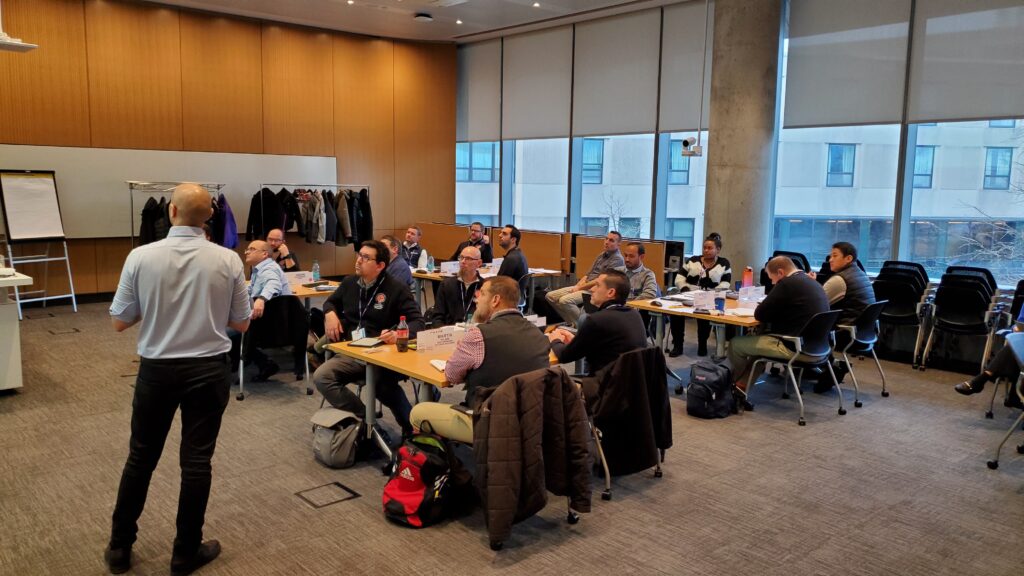By Eric Lanke
NFPA President/CEO
I recently attended the June 2019 Summit of the Center for Compact and Efficient Fluid Power (CCEFP) at Purdue University. This was the second of two meetings in our last fiscal year where the fluid power research projects supported by our new NFPA Research Supplement Program were presented.
In our efforts to increase the number of university students educated in fluid power, the NFPA Education and Technology Foundation provided ten $10,000 research supplements to ten academic faculty members working on fluid power research at six universities. This helps to engage current and build the careers of future university faculty who are and will be in a position to teach fluid power to undergraduate engineers on their campuses. The research supplements provide travel support so that each faculty member and one of their graduate students can attend to present their research at designated industry conferences and research summits like the one hosted by the CCEFP.
One such faculty member is Professor Perry Li of the University of Minnesota, whose graduate student, Brian Carrier, presented on their project, “Liquid Piston Gas Compressor/Expander for Compressed Air Energy Storage (CAES) and CO2 Sequestration,” at the CCEFP Summit. The goal here is to develop a prototype of a reciprocating high pressure, high efficiency, liquid piston gas compressor that can serve as an energy storage device for large-scale fluid power systems. Working with funding provided by the National Science Foundation, Li and his team have been testing a variety of heat transfer media configurations in the compression chamber of their prototype. They’re looking for the right configuration that will both increase the surface area and reduce the temperature of the air, thereby improving the efficiency of the system. Through a variety of simulations, they are also looking to optimize the shape of the compression chamber and flow rate so that the right pressure can be applied exactly where it is needed to maximize efficiency and power density. Their simulated results already show a 40-fold increase in power density, all while reducing the cost of the system by three-fourths.
A copy of Carrier’s presentation slides can be accessed here.
Collectively, the research projects supported by NFPA Research Supplements represent more than $4.9 million in funding from a variety of organizations, including the U.S. Department of Energy, the National Science Foundation, and the Center for Compact and Efficient Fluid Power (CCEFP). They are an excellent sample of the growing body of fluid power research being funded by the federal government and other research organizations.
Like this post? Share it!
Recent Posts
Allison Forsythe Speaks About the Value of Participating in Standards Development
We’re excited to share a new onboarding video from Allison Forsythe, your Standards and Program Manager at the National Fluid Power Association (NFPA). In this video, Allison highlights the important work we’re doing in standards development and how you can get involved. At NFPA, we manage both domestic and international standards, including those through the…
Enhance Your 2025 NFPA Annual Conference Experience By Bringing a Guest
2025 NFPA Annual ConferenceFebruary 25-27, 2025Tucson, AZRegistration Now Open The 2025 NFPA Annual Conference is not just about professional growth—it’s an opportunity to connect with your peers, your industry, and even your loved ones. As always, we’re offering an inviting Spouse/Guest Program that encourages you to bring someone special along to share in this experience.…
NFPA Executive Leadership Program Dives into the Art of Negotiation
The NFPA Executive Leadership Program is an in-depth and interactive program that helps emerging leaders in the fluid power industry develop their network and advance their management and leadership skills through tailored content. Its sessions are presented in collaboration with the Kellogg School of Management at Northwestern University, with Kellogg faculty helping to curate interactions among…




